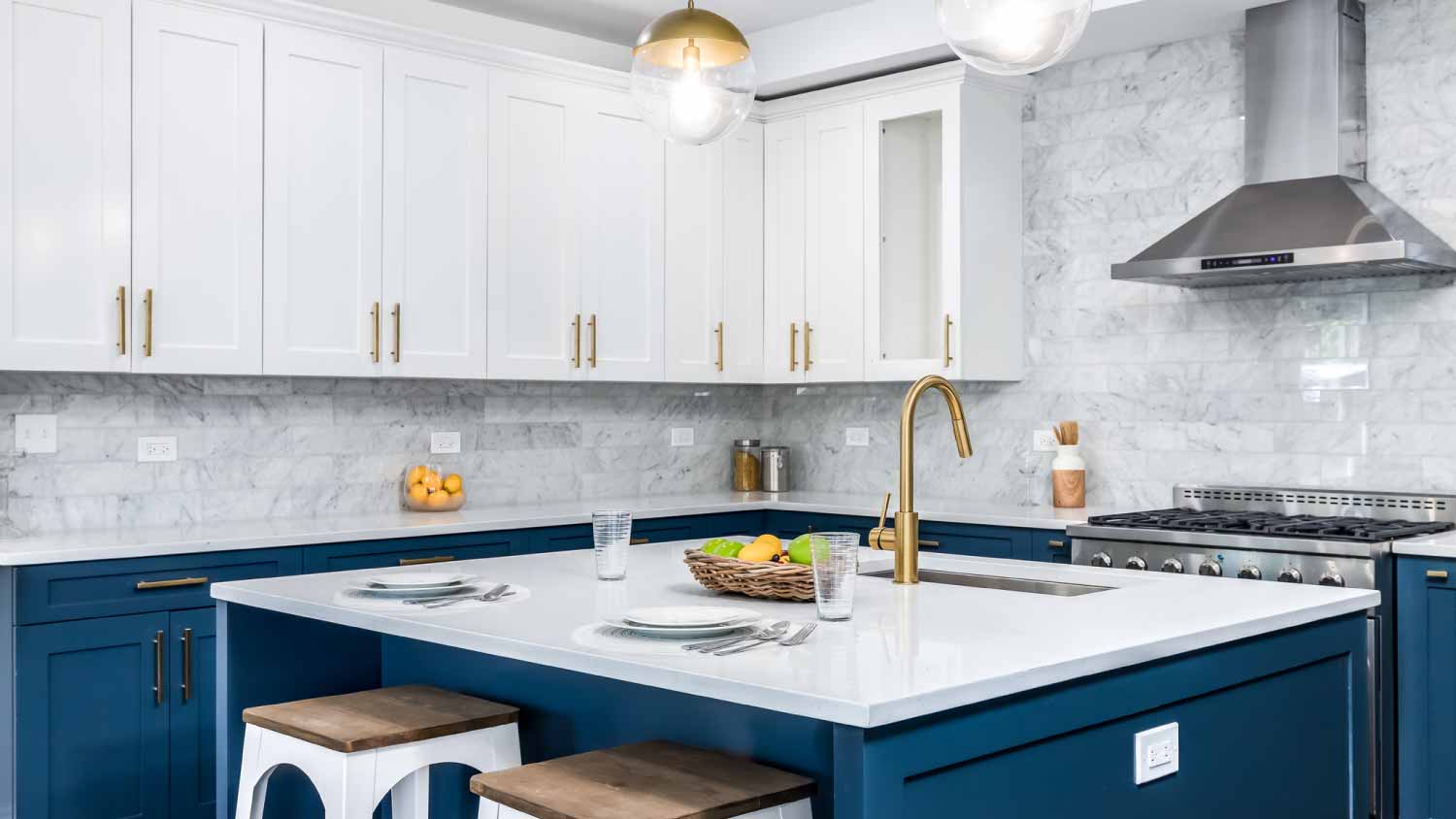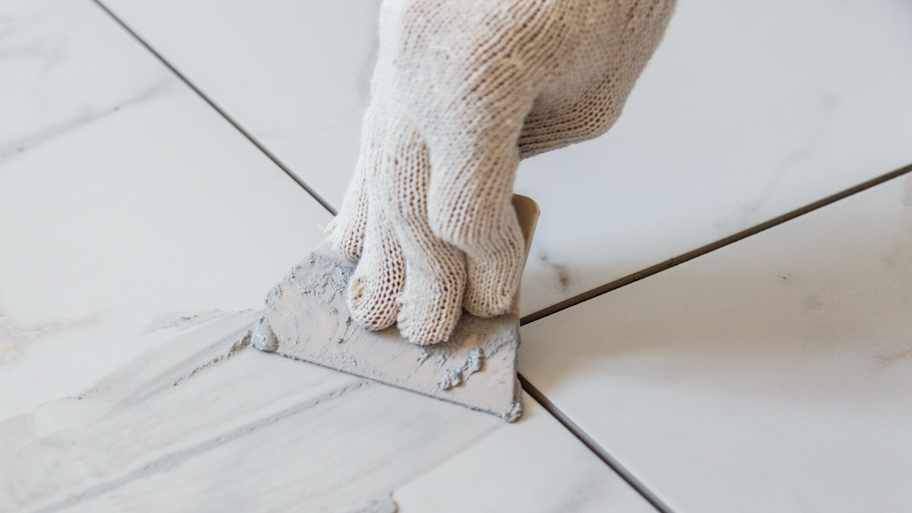
Damaged tiles should be fixed right away. In this guide, find out all of the different factors that affect your tile repair cost.
Kitchen design where style and function meet


The standard kitchen backsplash height is 4 inches above the countertop's surface.
A full backsplash is beneficial for homeowners who frequently cook at home.
The average cost to install backsplash ranges between $500 and $1,700.
Choosing the perfect kitchen backsplash height is a decision that can significantly impact its function and beauty. Whether you're embarking on a kitchen renovation project or simply looking to refresh the look of your culinary haven, understanding the nuances of backsplash heights is essential. Explore the three most common backsplash heights—standard, full, and low—so you can choose the right one for your kitchen.
The three most common backsplash heights are full, standard, and low. Here’s what to know about each one.
| Type of Backsplash | Common Height (In.) |
|---|---|
| Full | 18–24+ |
| Standard | 3–6 |
| Low | 1–3 |
The average height range of a full backsplash extends from the countertop all the way up to the upper cabinets or ceiling, covering the entire vertical space between the countertop and the upper cabinets. The height can vary significantly depending on the design and layout of the kitchen, but it often ranges from 18 to 24 inches, or even higher in some cases. A full backsplash provides maximum protection for the wall against splashes and spills while offering a cohesive and visually appealing look to the kitchen.
A backsplash is considered “standard height” if it is at least 3 inches tall and doesn’t rise up to your ceiling or the bottom of your cabinets. Most standard kitchen backsplashes fall between 3 and 6 inches high, with an average height of 4 inches. However, some standard-height backsplashes reach 8 or 10 inches high.
This “standard” height strikes a balance between protecting the wall from splashes and spills while maintaining visual appeal. The standard 4 inches ensures the backsplash complements the kitchen's overall design without overwhelming the space.
The average height range of a low backsplash falls between 1 to 3 inches above the countertop surface. Modern and contemporary kitchens favor this minimalistic approach to backsplash design for its sleek and clean appearance. Low backsplashes provide minimal protection while maintaining an understated aesthetic that contributes to the kitchen's open and spacious feel.

To measure the right backsplash height, you must first assess the area behind the countertop where the backsplash will be installed. Measure and note the height from the countertop surface to the bottom of the upper cabinets or any other fixed elements, such as windowsills or range hoods. This backsplash measurement serves as a baseline for determining the maximum height your backsplash can reach without interfering with other elements in the kitchen.
Consider the practical aspects of your kitchen activities. If you do a lot of cooking, especially near the stove or sink, you may want to opt for a taller backsplash to provide better protection against splashes and stains. Consider your personal preferences and the overall design aesthetic you're aiming for.
Don't forget to consider the proportions of your kitchen space. A backsplash that is too tall or too short relative to the surrounding elements can disrupt the visual flow and feel out of place. Take cues from your kitchen's overall scale and dimensions, ensuring that the chosen backsplash height complements the space harmoniously.
Choosing the right backsplash height can make all the difference in not only the function of the kitchen but also the visual appeal. Consider these points as you evaluate your choice.
Functionality: Evaluate how much protection your walls need, especially around areas like the stove and sink. A taller backsplash may offer more practicality in high-traffic cooking areas.
Cleaning: A full backsplash will prove much easier to clean compared with a standard backsplash that exposes part of the wall. Consider your cooking style and how your backsplash height could affect your cleaning frequency.
Design Style: Different design styles, such as modern, traditional, or eclectic, may lend themselves better to specific backsplash heights. For example, a low backsplash is often the preferred style for modern homes.
Cabinet Heights: The backsplash should complement the cabinets rather than visually overpowering them or appearing disjointed.
Personal Preference: Some may prefer a minimalist look with a low backsplash, while others may prefer the visual impact of a full-height backsplash. Determine what look most suits you.
Visual Balance: Ensure that the chosen backsplash height maintains visual balance within the kitchen space, taking into account other elements such as countertops, appliances, and décor.
Cost and Materials: Factor in the cost of backsplash materials and installation. On average, backsplash installation costs between $500 and $1,700, but full backsplashes cost the most because they require more materials and labor.
Lighting: Consider how the backsplash height may affect lighting in the kitchen. A full backsplash could cast shadows depending on the type of kitchen lighting.
There are steps you can take if you find yourself with the wrong kitchen backsplash height or design.
If the backsplash is too tall, consider installing a trim piece or molding along the top edge to visually lower its height. This can create a more balanced and proportionate look in the kitchen while also adding a decorative element to the space.
If the backsplash is too short and you're experiencing splashes and stains on the wall above the countertop, you may need to extend the height of the backsplash. Depending on your budget and preferences, this could involve adding additional tile or a complementary material to the existing backsplash to increase its height.
In cases where the backsplash simply doesn't match your design vision or the overall style of your kitchen, you can replace it entirely. Explore different backsplash materials, colors, and styles that better complement your kitchen's aesthetic and meet your functional needs. Whether you opt for a subtle update or a complete renovation, addressing a mismatched or inadequate backsplash height can significantly enhance the look and functionality of your kitchen space.
Hiring a local backsplash installer can do wonders if you want to replace or renovate your kitchen backsplash. A pro can assist with installation or provide backsplash alternatives to suit your taste and budget.
From average costs to expert advice, get all the answers you need to get your job done.

Damaged tiles should be fixed right away. In this guide, find out all of the different factors that affect your tile repair cost.

Discover the cost to regrout shower, including average prices, key cost factors, and tips to help you budget for a fresh, watertight shower.

Whether it’s on your floor, walls, or shower, ceramic tile can add style to your space. So, how much does ceramic tile installation cost? Let’s break it down.

How much grout do I need? This calculator will help you estimate how much grout you’ll need to purchase for your tiles so that you can start budgeting.

Working on a home reno? You’ll need to remove old grout and clean grout haze on newly installed tiles. Learn how to soften grout for removal in five easy ways.

Discover the differences between epoxy grout versus cement grout and choose the best option for your tiling project. Learn about pros, cons, and ideal uses.